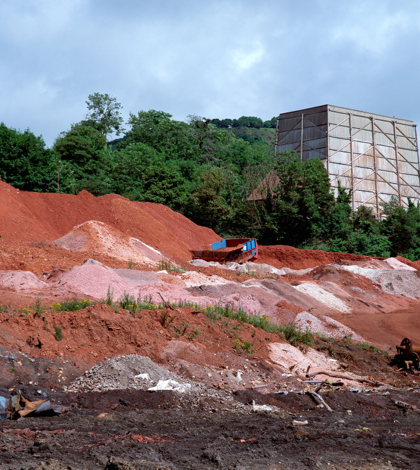Some California cities are still trying to determine what projects they can finish, while a harsh reality sinks in: nothing can replace redevelopment if a city’s goal is to replace blight.
Sometime during the second half of this year, workers will begin widening the on-ramps and off-ramps at the Baseline-Interstate 15 exchange in Rancho Cucamonga.
The project, which is expected to cost up to $45 million, will be significant beyond the improvements it makes to traffic flow in that part of the city: It will also be the last project in Rancho Cucamonga that will be paid for with redevelopment funds, said Linda Daniels, the city’s assistant city manager.
“We already had the funding set aside, so when they did away with redevelopment it stayed on the books,” Daniels said of the refurbishment, which is budgeted for the fiscal year that starts July 1. “But when that’s finished, the city won’t have any more redevelopment projects.”
Rancho Cucamonga, of course, isn’t alone. Every other municipality in the state is either done with redevelopment or, like Rancho Cucamonga, soon will be.
Three years ago this month, more than 400 redevelopment agencies up and down the state went out of business, less than two months after the state Supreme Court ruled in favor of a law, passed by the state legislature in the summer of 2010, that did away with redevelopment.
The court ruled unanimously that the state legislature, which clearly had the right to create redevelopment agencies, also had the right to dissolve them.
At the same time, the court struck down a companion bill that would have allowed redevelopment agencies to remain in place if they agreed to share some of their revenues with the state.
Gov. Jerry Brown’s proposal to do away with redevelopment as a way to help solve the state’s budget crisis caught officials throughout the state by surprise. Redevelopment had been on the books in California since the end of World War II, and it was responsible for several major urban renewal successes, including Pasadena’s Old Town and the Gaslamp district in San Diego.
Redevelopment agencies used property tax revenue to partner with developers and encourage development.
Over time, cities and counties came to view redevelopment as the best way to restore rundown parts of their communities and attract jobs, but the program did have its detractors. It was often criticized, by Republicans and Democrats alike, for seizing private property and for putting public money at the disposal of already-wealthy developers.
When they were dissolved, redevelopment agencies in California controlled about $5 billon a year in tax revenue. That money now goes to schools and special public safety districts, while cities look for ways to replace redevelopment.
Because of the way they were structured financially, redevelopment districts are almost impossible to replace, said John Husing, Inland Empire economist and a critic of the elimination of redevelopment.
“I hear from people all the time about how much redevelopment is missed,” Husing said. “The state took away the one tool that cities had to remove blight, and that tool was based on tax increments. Unfortunately, there’s no way you can replace that.”
Cities that want to develop around their transportation hubs, like Metrolink stations, will have a harder time doing so without redevelopment, Husing said.
“Those places are usually in the older part of town, and when the transportation stations go in the cities usually want to fix them up,” Husing said. “That’s the community’s job, and now they will have to find another way to do it.”
Ontario is still dissolving its redevelopment agency, and its in litigation with the state regarding that action, said John Andrews, the city’s economic development director.
“We always felt like we used redevelopment pretty efficiently, so yes, we are missing it,” said Andrews, adding that the pending lawsuit with Sacramento prevented him from discussing any former redevelopment projects. “Three years out and we’re still trying to get the agency dissolved. It’s a very complicated process.”
The end of redevelopment has led to a morass of lawsuits in Sacramento, as cities try to determine what projects they can finish.
When the state legislature did away with redevelopment, it agreed that any redevelopment projects that had not been completed – like the Baseline-Interstate 15 refurbishment in Rancho Cucamonga – would be completed with redevelopment-generated revenue, said Dan Carrigg, legislative director for the League of California Cities in Sacramento.
But that has led to a spate of legal action, as cities and the state Department of Finance wrangle over what “in the pipeline” means and what is the definition of a former redevelopment project, Carrigg said.
All of those disputes could take four to five years to resolve, Carrigg said.
“The state eliminated redevelopment so it could replenish its general fund,” said Carrigg, who said he has lately been dealing with redevelopment dissolution issues on behalf of the league. “That means that any former redevelopment projects out there means, potentially, more money for the state.”
Infrastructure isn’t the only area where the absence of redevelopment is being felt. Environmental clean-up projects have been hurt, and affordable housing up and down the state has taken a hit.
“Redevelopment used to account for $1 billion a year in affordable housing construction,” Carrigg said. “Now all of that is gone.”
 IE Business Daily Business news for the Inland Empire.
IE Business Daily Business news for the Inland Empire.


